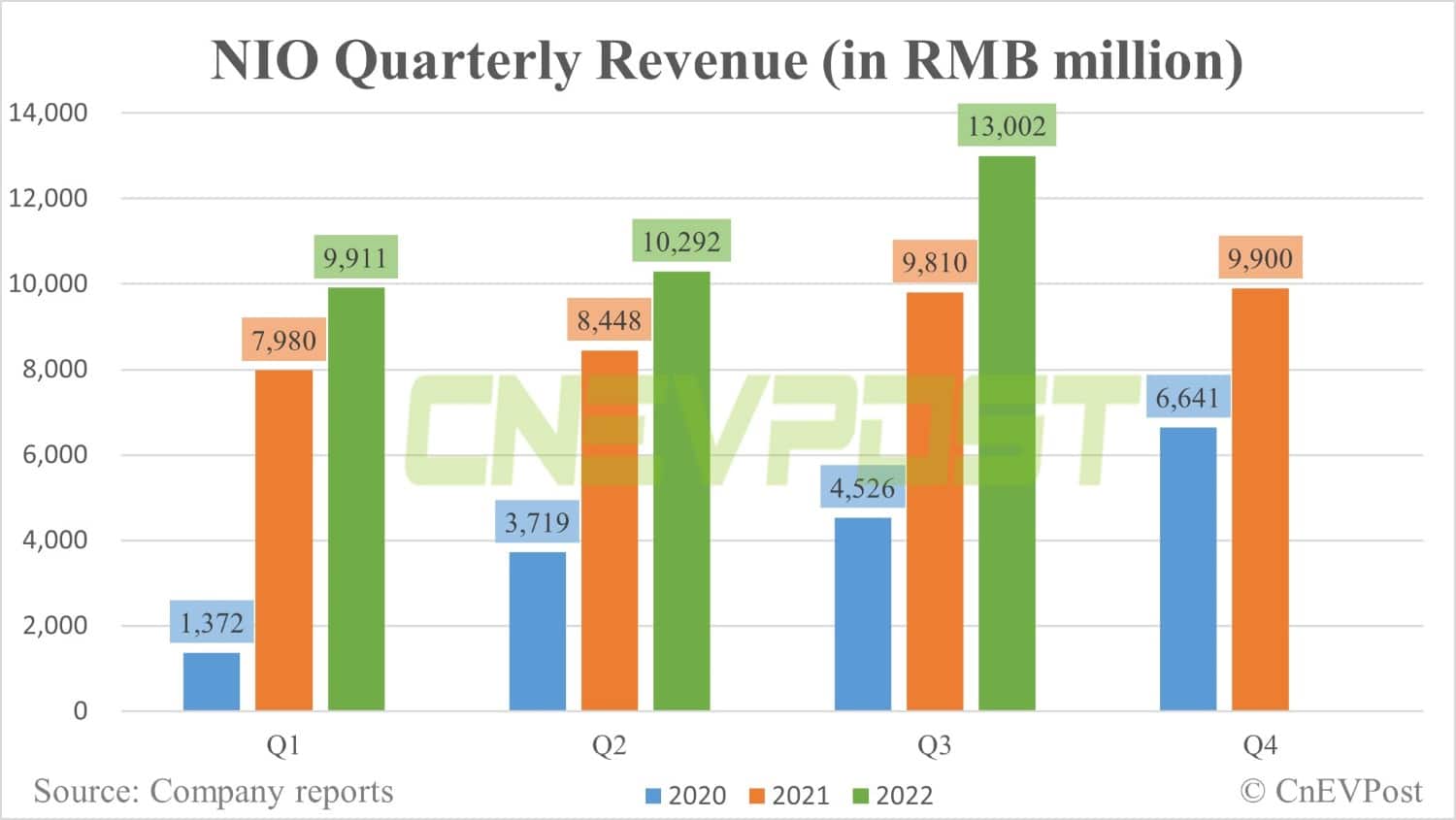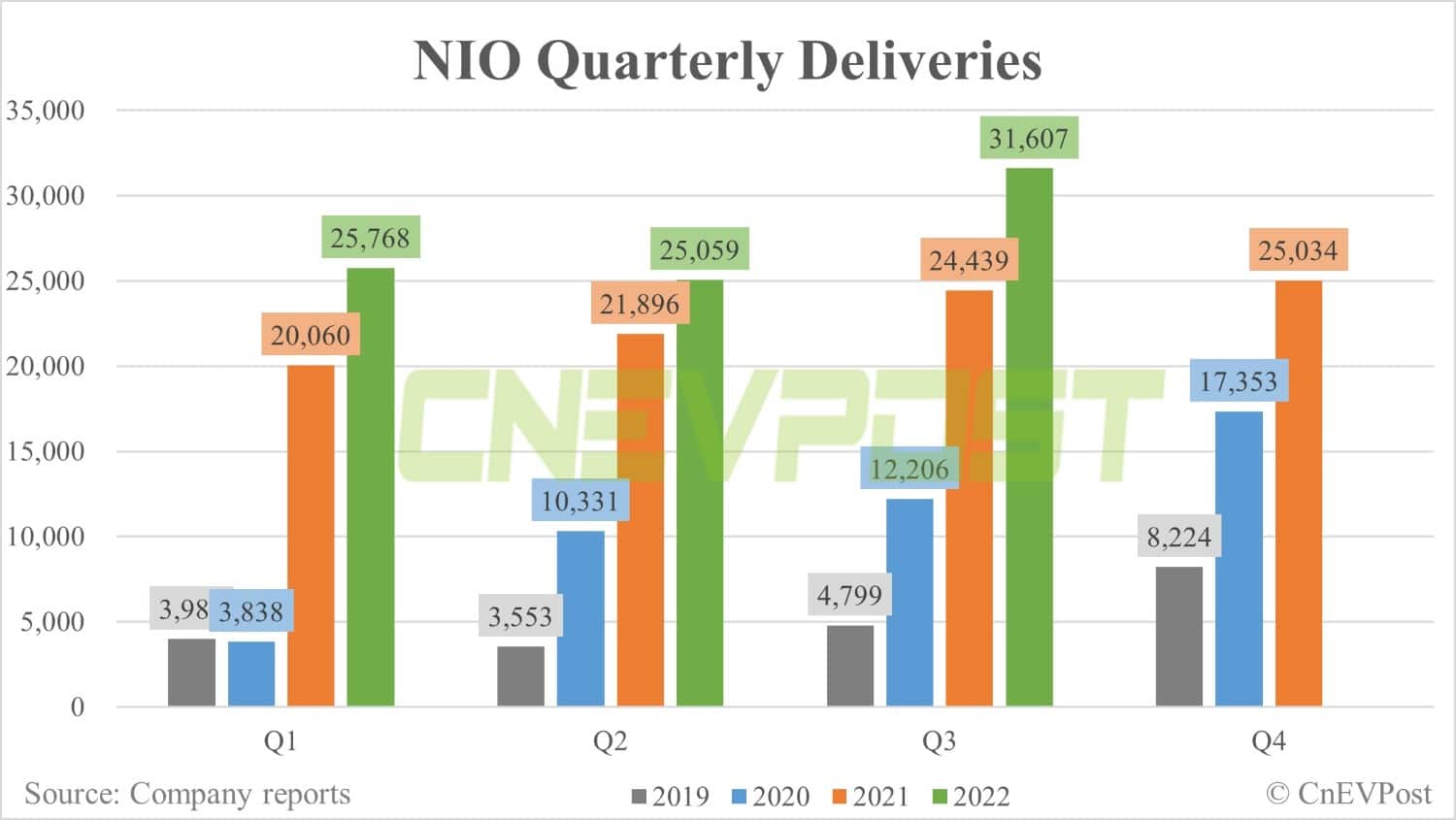Deutsche Bank's Edison Yu's team thinks Nio's performance will improve significantly in the second half of the year, but there's a big "IF" in it.
Nio (NYSE: NIO) will report fourth-quarter earnings on March 1, and the previously released delivery numbers showed a weak quarter. Now the concern is, how long will this last?
Deutsche Bank analyst Edison Yu's team said the fourth quarter will be a weak one for Nio, with margin downside risk and a weak outlook for first-quarter sales.
But as the year progresses, a significant improvement can be expected in the second half, if new models ramp up as planned and scale up accordingly, the team said in a research note sent to investors yesterday.
Fourth quarter earnings
Nio announced last week that it will report its unaudited financial results for the fourth quarter and full year 2022 on March 1, before the US markets open.
Previously released data showed the company delivered 40,052 vehicles in the fourth quarter, below its initial guidance range of 43,000 to 48,000, but above the lowered guidance of 38,500 to 39,500 vehicles.
The company's revenue guidance for the fourth quarter was RMB 17.37 billion to RMB 19.23 billion when it reported its third-quarter earnings on November 10. It gave no new revenue guidance when it lowered its delivery guidance on December 27.
Yu's team expects Nio to report revenue of RMB 16.2 billion, gross margin of 13.5 percent and adjusted earnings per share of -1.83 in the fourth quarter.
This compares to the current analyst consensus estimates of RMB 17.4 billion, 14.0 percent, and -1.85, respectively, in the Bloomberg survey.
Nio reported revenue of RMB 13 billion and gross margin of 13.3 percent in the third quarter of 2022.
Weakness likely to continue in the first quarter
Similar to the situation in the Chinese auto industry as a whole, Nio faces a tough start in 2023.
Yu's team expects Nio to deliver around 33,000-35,000 units in the first quarter.
This is helped by Nio's promotions on older models to clear inventory before product refreshes and to compensate for the phasing out of government NEV subsidies, the team noted.
Nio delivered 8,506 vehicles in January, down 46.22 percent from 15,815 in December and down 11.87 percent from 9,652 in the same month last year, data released earlier this month showed.
Yu's team had expected higher demand for the existing NT 2.0 models, but noted that it was clear that the ET7 was struggling and that demand for the ES7 had recently faded.
The ET5 was essentially the only model with sizeable demand, albeit below previous expectations of more than 10,000 units per month, the team said.
The team attributed the poor sales to three main factors:
First, the operational troubles last year caused delays ramping up production of ET7 and ET5. At the time of unveiling, these were considered the newest trendy electric cars on the market but eventually many customers cancelled because the wait times just got too long and newer competing models hit the market.
For example, we estimated there were at least 60k orders for the ET7 before SOP but by the end of 2022, there were only <25k units delivered, suggesting over half of pre-orders may have been cancelled.
Second, the broader premium segment appears to be electrifying more slowly which may be counter intuitive to those outside China.
For example, in both Dec and Jan, the top 5 selling premium sedans in China were all gasoline models from German luxury OEMs.
Third, affluent customers in major urban areas appear to be prioritizing spending outside of autos following the COVID re-open (e.g., traveling, recreation, etc...).
On gross margin, Yu's team expects a weak first quarter due to promotional activities, suggesting that auto gross margins could be flat to down on a sequential basis.
Second half may see a rebound
Yu's team expects Nio's performance to improve significantly in the second half of the year, but there's a big "if" in that.
"As the year progresses, we can envision the back half improving significantly IF new models ramp-up on schedule and scale up accordingly, " the team wrote.
As Chinese society adapts to post-zero-Covid norms, there could also be a favorable shift in consumer behavior toward high-end pure electric vehicles, the team said.
Nio will enter the second half of the year with five all-new models that could sell 15,000-20,000 units per month, even using conservative estimates, according to the team.
Yu's team expects the ET7 to undergo interior improvements before the end of the year, which could reignite demand in the fourth quarter.
In addition, CATL is reportedly offering rebates to several electric vehicle companies, including Nio. The team believes this is expected to help Nio's vehicle margins have a chance to reach 20 percent in the fourth quarter and could push the "core" Nio brand into EBIT break-even territory, assuming operating expenses are kept in check.
The team also noted that many investors have lost patience with Nio after repeated volume and margin disappointments. They often asked how could volume still be so low? Why are there always production problems?
Yu's team believes that Nio shares had embedded a very negative path forward. They reiterate that Nio's long-term strategy of having multiple brands, holistic charging infrastructure and an aspirational ecosystem can still ultimately win out once the dust settles on the EV wars.



